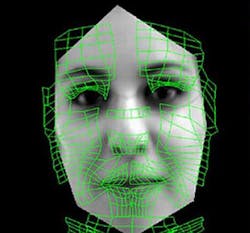Intelligence researchers seek to make big improvements in biometric facial recognition
WASHINGTON, 4 June 2013. U.S. government researchers are preparing to asking industry to develop advanced facial-recognition technology able to identify people not only using incomplete, erroneous, and ambiguous data, but also that accounts for aging, pose, illumination, and expression.
Officials of the Intelligence Advanced Research Projects Activity (IARPA) are preparing a solicitation for the Janus program, which seeks to improve the performance of face-recognition tools by fusing -information from different views captured by a variety of still-image and video cameras.
IARPA will brief industry about the Janus program from 8:30 to 3:30 p.m. on 13 June 2013 at a controlled-access facility in the Washington, D.C. area. Those interested in attending must register no later than this Thursday, 6 June 2013, to get specific information on the meeting's location.
IARPA is the research arm of the U.S. Office of the Director of National Intelligence. Janus refers to the two-face Roman god of beginnings and transitions who presided over the beginning and ending of conflict, as well as war and peace.
Intelligence analysts today rely on facial images to help identify people, yet this technology typically relies on well-posed, frontal facial photos. Instead, the Janus program aims to make dramatic improvements in face recognition tools by fusing the rich spatial, temporal, and contextual information available from the multiple views captured by security cameras, cell phone cameras, news video, and other sources referred to as "media in the wild."
Janus seeks to develop representational models able to encode the shape, texture, and dynamics of a face, rather than rely on one posed photo, which address the challenges of aging, pose, illumination, and expression (A-PIE) by exploiting all available imagery.
The aim is to improve the performance of biometric recognition that uses a variety of videos, camera stills, and scanned photos taken in real-world conditions. IARPA experts say Janus will draw from pattern recognition and machine learning; computer vision and image processing; computer graphics and animation; mathematical statistics and modeling; and data visualization and analytics.
IARPA officials say they plan to release a formal solicitation for the Janus program on or before the industry briefings on 13 June. Companies interested in attending the briefings should register online at https://www.signup4.net/Public/ap.aspx?EID=JANU103E.
For questions or concerns email IARPA's Mark Burge, the Janus program manager, at [email protected]. More information is online at https://www.fbo.gov/notices/0c80c7edac698009276918c7478e9a91.
